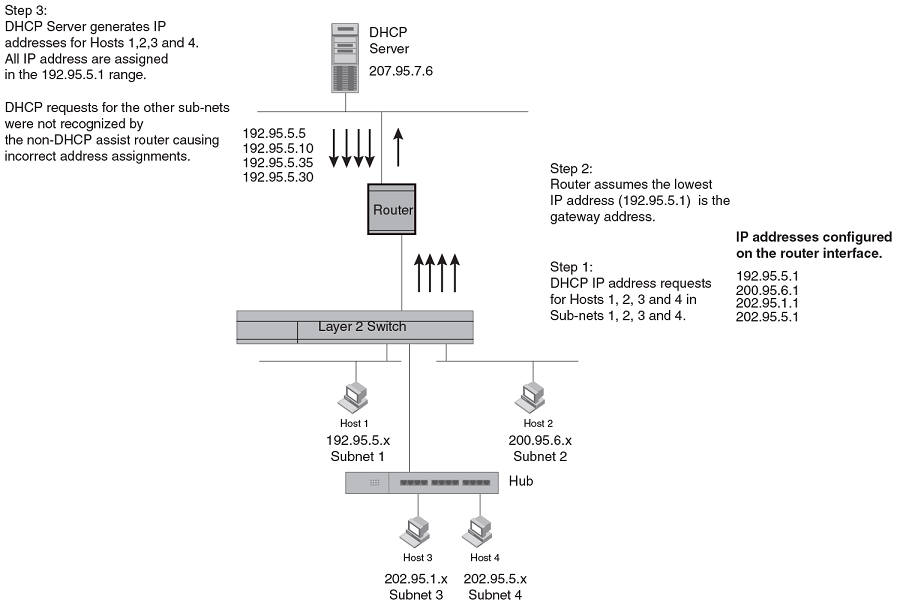DHCP Assist configuration
DHCP Assist allows a Ruckus Layer 2 switch to assist a router that is performing multi-netting on its interfaces as part of its DHCP relay function.
DHCP Assist ensures that a DHCP server that manages multiple IP subnets can readily recognize the requester IP subnet, even when that server is not on the client local LAN segment. The Ruckus Layer 2 switch does so by stamping each request with its IP gateway address in the DHCP discovery packet.
By allowing multiple subnet DHCP requests to be sent on the same wire, you can reduce the number of router ports required to support secondary addressing, as well as reduce the number of DHCP servers required by allowing a server to manage multiple subnet address assignments.

In a network operating without DHCP Assist, hosts can be assigned IP addresses from the wrong subnet range because a router with multiple subnets configured on an interface cannot distinguish among DHCP discovery packets received from different subnets.
In the example depicted, a host from each of the four subnets supported on a Layer 2 switch requests an IP address from the DHCP server. These requests are sent transparently to the router. Because the router is unable to determine the origin of each packet by subnet, it assumes the lowest IP address or the "primary address" is the gateway for all ports on the Layer 2 switch and stamps the request with that address.
When the DHCP request is received at the server, it assigns all IP addresses within that range only.
With DHCP Assist enabled on a Ruckus Layer 2 switch, correct assignments are made because the Layer 2 switch provides the stamping service.
